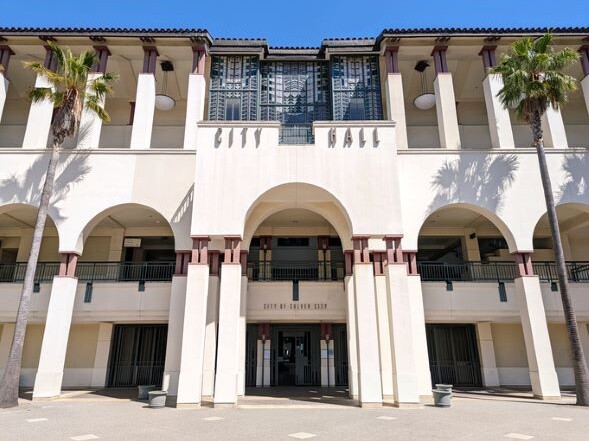The Culver City Council heard from numerous members of the public Tuesday evening as they wrestled with and ultimately passed their final draft Housing Element for 2021-2029. The Housing Element, part of a General Plan Update, is required of cities every eight years by the State’s Housing and Community Development agency (HCD).
In response to the perceived housing crisis in California, the Southern California Association of Governments (SCAG), through the HCD, tasked cities like Culver City with very large increases in their Regional Housing Needs Allocation, or RHNA. For the 2021-2029 period, Culver City is expected to produce 3,341 units of housing or face financial penalties from the State, including losing out on funding support for essential programs. The newer, more demanding RHNA numbers have been met with a great deal of resistance from many area residents, but have been celebrated by housing advocates who favor a much more abundant housing supply, regardless of affordability.
Housing advocates and environmentalists have also championed density, which they argue mitigates the carbon footprint of residents even as more are added to a city. In fact, a document known as a “Negative Declaration” accompanies the Housing Element which, through an initial study, claims, “there is no substantial evidence, in light of the whole record before the agency, that the project may have a significant effect on the environment.”
Resident Bryan Sanders disagreed with those findings, telling the council, “This notion that density is going to decrease greenhouse gases is… just bizarre thinking.” Sanders also claimed that there is “documented” evidence that incremental infill projects like that proposed in the Housing Element do little to affect affordability.
Lori Garcia also maintained that simply building more homes won’t equal affordability. “If we truly want equality, fourplexes should require one low-income [unit], one affordable [unit],” she said.
But Freddy Puza, who lives in Fox Hills, favors more housing development. “Simply put, we need much more housing,” said Puza. “Culver City’s not keeping up with its economic growth and it’s failing at producing an adequate amount of housing at all income levels.”
One of the key components of the Housing Element is a proposed “incremental infill” plan that would look for site opportunities in the city core for housing production. Resident Jamie Wallace wasn’t having it, telling the council, “I’d like to remind you that staff has stated several times now that the RHNA numbers can be accommodated without incremental infill. So, what is the point? Trickle-down housing?”
When it was the city council’s turn, Mayor Daniel Lee – who was pressed for time as he needed to catch a red-eye – spoke first. “I am here to build more housing for low-income people and more affordable housing in general. I am not convinced building more market rate housing, exclusively, is the solution.” But the mayor did also warn that something needed to pass, as the state is moving in a more punitive direction for cities not meeting their RHNA numbers.
Councilman Göran Eriksson floated the idea of passing the Housing Element without the incremental infill plan, something he seemingly thought might entice the mayor. Vice Mayor Albert Vera built on that idea by adding to Eriksson’s motion the elimination of the environmental Negative Declaration.
But Councilmember Alex Fisch bristled at the package, quickly stating, “Then we’re not submitting a Housing Element at all.”
Mayor Lee spoke several times to his willingness to hold a special meeting to extend public comment and council debate, but it seemed to fizzle out as Fisch warned that the looming state deadline of February 12 to avoid penalties was fast approaching.
Vera was clearly unnerved by the rush to vote, saying, “Don’t we truly owe it to our constituents to take our time with this? To make sure we get it right? The fairness of this baffles me because I have plenty of comments. I have lists of pages. Not only are you censoring the residents who want to speak, but your squelching my voice.”
Ultimately, Fisch proposed a substitute motion to Eriksson’s and Vera’s to pass the housing plan as is, which procedurally is taken first. The Housing Element was approved by a vote of 3-2. The ayes: Lee, Fisch, and Councilwoman Yasmin-Imani McMorrin. The nays: Eriksson and Vera.
The process began back in May with the city’s planning commission beginning to take public input and submitting a proposed draft housing element to HCD in July. Tuesday’s draft, the 3rd, was the city’s response to changes proposed by HCD.
Stay informed. Sign up for The Westside Voice Newsletter
By clicking submit, you agree to share your email address with Westside Voice. We do not sell or share your information with anyone.








